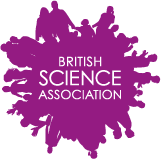Some good news, I’ve been chosen as one of the 2013 British Science Association Media Fellows. The Guardian newspaper science team chose me for a placement with them in July. I’ll be working on the Science Weekly podcasts (have a listen to some if you haven’t before, they’re really interesting and cover lots of different science topics) and getting some journalistic writing experience covering science news stories. As part of this fellowship I also get the chance to attend the British Science Festival which is held in Newcastle this year. I’ll be reporting back to The Guardian that week on the top stories they might want to cover. Should make a change from my normal job in the lab, better swap my lab book for a reporters notebook and get brushing up on the shorthand!
Category: My blog
Mining rocks in space: science fiction or fact?
There has been much debate in the media, and in my department recently about the possibility of using spacecraft to mine precious minerals and metals from asteroids and return them back to Earth. I thought it might be an idea to write a little blog on this because I think the idea is absolutely amazing, but it sounds like something we only see in the movies. Let’s look at the ideas.
Mining an asteroid: the announcement
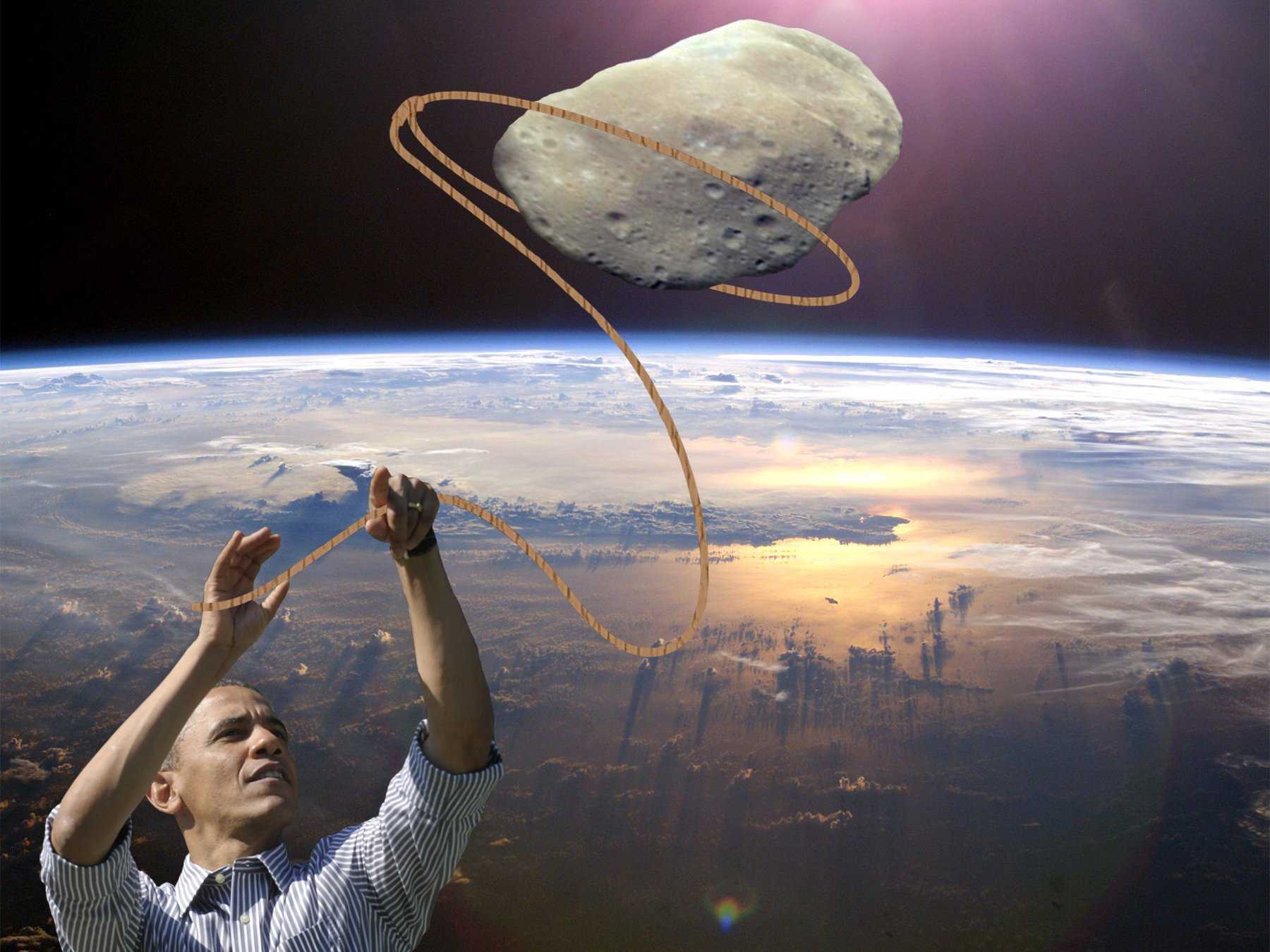
Image from: http://www.businessinsider.com/nasas-100-million-asteroid-initiative-2013-4?op=1
The announcement by NASA, backed by President Barack Obama, earlier this year centred around the plans to launch a mission (in 2019) that would be capable of ‘capturing’ or ‘lassoing’ a small asteroid in space and dragging it into Earth orbit (Moon’s high orbit to be precise). Once safely positioned in this location the plan is to send manned missions (Orion spacecraft, in 2021) to the asteroid to carry out mining activities. I’m imagining Bruce Willis in Aramageddon but maybe it won’t be exactly like that! With the involvement of private companies, it is said that it would be possible to return precious minerals and metals mined from the asteroid back to Earth.
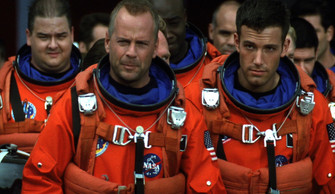
Image from: http://www.nextpowerup.com/news/341/nasa-cowboys-make-plans-to-rope-an-asteroid.html
Well this all sounds quite fantastic, and did you note the proposed dates? If these audacious plans can be pulled off in that timeframe then it would be unbelievably fast on space discovery timescales. In order for all this to come together in time, it would have to be assumed that the required technologies are, at least, in the development phase. This is not currently clear. However, with the involvement of private companies, bringing more money to the plans, it might just be possible. But what are the technologies that are required, and can an asteroid really provide all the precious materials that would be needed to make the plans useful (for science) and economical (for the private companies)?
The plan: Pros and Cons
The initial plan is to capture a small asteroid (maybe 5-10m diameter would be safe). One issue of starting with a small asteroid is that, at the moment, it is hard for astronomers to actually observe this size of object in space from the Earth (unless it is very close, i.e. about to collide with Earth). However, if we can locate an appropriately sized rock in space then there are pros and cons to capturing something so small. The Pros are that if the relocation of a small captured asteroid from it’s current orbit to one nearer the Earth goes slightly wrong, and it ends up colliding with Earth, then it would most likely burn up in the atmosphere and not hit our planet’s surface. The Cons are that a small asteroid would not yield as much useful resource and so it may be necessary to capture more asteroids in order to make the process anywhere near economical, if it can be at all. I am by no means a business-minded person so I won’t comment on that! Initially though, capturing a small asteroid may be adequate as a ‘proof of concept’, simply to test if the technology and mission plans are successful. If so, even more exciting and ambitious plans could begin, and the rest of space is ours for the taking.
Technology development
There are some very useful aspects to an asteroid capture mission and these would be in the technology development required to carry out the asteroid capture, the movement of the asteroid from its current course and the zero-gravity mining, to name just a few that spring to mind. The space industry is already well known for developing many technologies that have also been useful on Earth (spin-off technologies, I won’t go into them here, there are loads (perhaps another blog post at some point)).
In the NASA asteroid mining plans, it is proposed that ion thrusters would be capable of shifting the captured asteroid from its natural course in order to ‘park’ it next to the Moon. Such thrusters have already been employed on the NASA Dawn mission but only to power the spacecraft itself, not to move a separate object in space. If ion thrusters were proven to be successful in shifting objects in space then governments may consider using them in the future if we were at threat from an asteroid impact. Although there’s a good chance that we’re safe from a large asteroid impact on Earth for at least the next 100 years, there is a small chance that a large asteroid is heading for us that we simply haven’t seen yet. If this was the case then we might want to think about launching a spacecraft to deflect the asteroid away from the Earth. There are actually various options being discussed on how this might be achieved. One of the wildest involves painting one side of the asteroid white to use the Sun’s heat to cause the asteroid to rotate off its current course. However, the most plausible options probably involve either the use of explosives to break the asteroid up into smaller pieces (which may then collide with Earth but if small enough would burn up in the atmosphere), or ion thrusters to nudge the asteroid onto a new course. So, asteroid mining could have the potential to provide us with the technology to save all of humanity!
The development of technology for mining in zero-gravity would also be a huge step forward for science research. If such technology was developed then it would be much easier for scientists to design sample return missions to collect material from comets and asteroids for study on Earth, allowing us to learn more about these objects. Currently most sample return missions to comets and asteroids have employed, or will employ, more of a touch and run approach to sample collection, without the requirement for landing on the object itself. While this obviously makes things a little simpler and cheaper, it does mean that we don’t have a good control on what material is sampled, and it can only ever come from the top surface of the object when it would be nice to sample down into the interior.
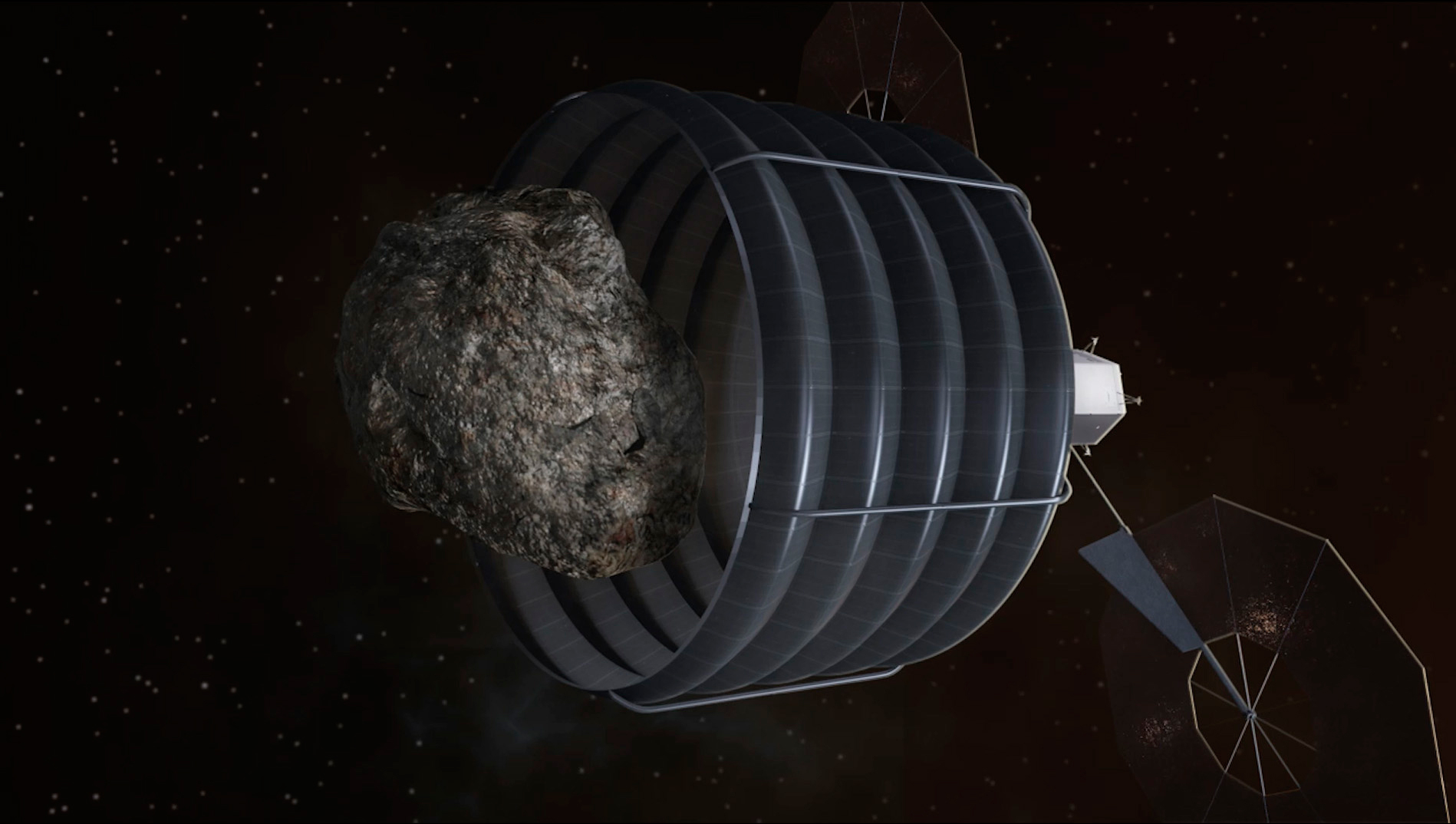
Asteroid as a filling station
Another benefit of developing asteroid mining missions is that the captured asteroid could also act as a filling station to fuel a spacecraft to make a journey further into space. It is in fact the water contained in the asteroid that could be used as a propellant, so we would effectively be creating our own fuel in space, which sounds fairly economical. This would mean that the exploration of other planets, such as Mars, could be done with less energy because the spacecraft needs to initially just carry enough fuel to get to the asteroid before it can refuel and continue its journey.
So, do we want to mine an asteroid?
Even if we put aside all the, as yet, undeveloped and/or untested technologies, is space mining something we should, and want, to do as a global community? On the whole I am feeling fairly positive about the idea of mining asteroids, but mostly for selfish reasons in the hope that it would result in more samples for my research. However, we do need to think of the lasting effects this type of mining could have. Despite the fact we have plenty of asteroids at our disposal, the question is whether we want to start using them? In terms of mining in space in general, I would personally have a problem with a large-scale mining effort on another planet and this is for two reasons. The first is because of the high chance of contamination of Earth bugs onto the planet meaning that science research in the future could be compromised. This is always one of the main considerations, and something that is taken very seriously, when planning any scientific missions to other planets at the moment. The second reason is that the mining activities would probably leave a very obvious and lasting effect on other planetary surfaces that could never be erased. Planetary exploration so far has been to such a small degree, and done with such care for science research, that it isn’t causing a big problem for the future. However, in terms of asteroids, we have plenty of them (and most of them we’ve never even seen) so I think it’s reasonable to mine a few because the masses of rock we are talking about are extremely small in comparison to planets.
Returning space rock back to Earth
So far as a global community we’ve only managed to return very small amounts of material from asteroids and comets to Earth. This is because it is very expensive to return space rock, you effectively need double the technology (spacecraft to get to, and maybe land on, the object and some more to collect and return a sample to Earth). In fact the NASA Stardust mission was relatively cheap in space terms (~$200 million) but only returned about 1 milligram of material. Despite these small masses returned, Stardust remains as the only sample return mission from a comet so as a scientist whose worked on such samples, I will take anything I’m given, even if the particle is smaller than the width of a human hair (as often they are!). So, for research I would obviously welcome the return of material mined from an asteroid because it sounds like there is the potential for much larger masses to be returned than is currently possible with science research missions. However, would a private company be happy to provide scientists with samples? And would they be happy to collect and store the samples in the conditions that scientists require in order to really understand the rocks (i.e. ultra-clean). For science though, having samples we truly understand because they are from a known object in space, is one of our biggest priorities. So I say good luck to the space miners, and please may I have some rock when it comes back?!
A busy outreach week.
A quick update about my busy but fun outreach week. I did another Café Scientifique event on Monday (15th April) night for the opening event of the Milton Keynes branch. The evening was held in the Slug and Lettuce pub in Milton Keynes where we nervously awaited our audience wondering whether anyone would want to turn up to this new event. Luckily the organisers had done a great job advertising the evening and we had around 40 people turn up. Once again I was presenting with Dr Louisa Preston, also of the Open University, about ‘Life in the Cosmos’. We waited for everyone to gather drinks and food then Louisa kicked off the evening talking about life in the universe and how we look at extreme life on Earth. I then moved on to talking about how asteroids and comets may represent the delivery of the seeds for life on Earth. After about 30 minutes we had a short break for people to re-fill their glasses then we showed the meteorite collection and took questions from the audience. As usual, lots of great questions, and once again, some I couldn’t answer which I think is great, just shows me that non-specialists can be quite insightful! We finished up the evening around 21:30, having to physically remove the meteorites from the grasp of some people’s hands. I had a great evening and I’m looking forward to attending some future events as an audience member. Good luck to the Café Sci MK team for this year. Meetings will be held once a month and I think they should prove to be very popular. Look out for them on Twitter and Facebook.
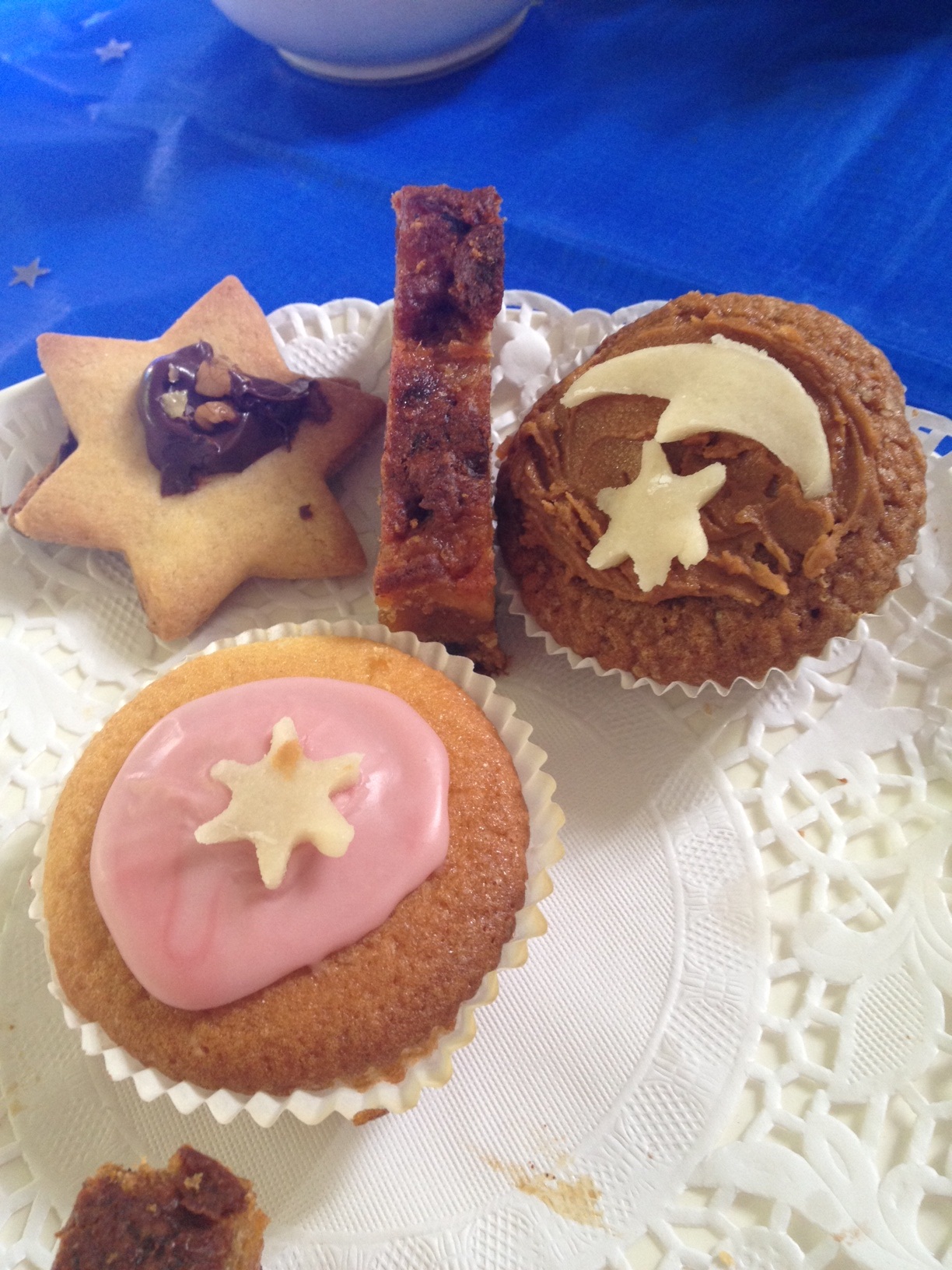
On Tuesday (16th April) I drove over to Bath to attend my first Women’s Institute (WI) meeting where I’d been invited to speak to the ladies of South Stoke about ‘Sampling the mysteries of the Solar System’. I wasn’t sure what to expect from the WI but I had such a warm and friendly welcome from the 40 ladies and I very much enjoyed the fact that they’d themed their table decorations around a space-theme. I spoke to the ladies for around 45 minutes about how we sample and analyse comets, asteroids and planets then I showed them the meteorite collection. I was conscious of the fact that they probably wanted to move on to the beautifully prepared afternoon tea but instead they were all so excited to see the rocks from space and to hold a piece of rock from Mars. We then moved on to the tea, sandwiches and cake (rock cakes included for obvious reasons) whilst still discussing space rocks, I had so many great conversations and loved also hearing their stories. I had a thoroughly enjoyable afternoon and had some lovely feedback from the ladies. I’ll need to attend another event soon if just for the amazing cake!
Conferences and comets
Well it’s been a busy few weeks. Unfortunately I didn’t manage to see Comet PanSTARRS, it was far too cloudy where I am and there was also too much light pollution. Despite my own lack of a sighting, I did appear briefly on Sky News (see here) speaking about how you might see the comet. I should have listened to my own advice and gone to somewhere a bit darker…possibly like the new dark skies reserve that was created recently in Exmoor National Park. May be a good place to go for Comet ISON, only 8 months to go…fingers crossed it will be easier to spot.
Last week I was away at the Lunar Planetary Science Conference in Houston. This was a fantastic week of scientific presentations on all manner of space-related research. Check out the abstract volume here for 2 page summaries of the science presented. My abstract is here which I presented on Friday 22nd March in the ‘Stardust and IDPs’ session, which I also chaired alongside Don Brownlee. I had lots of fun and I had some useful feedback after my talk, so hopefully some exciting new collaborations are on the way.
I also had a busy media week. I was mentioned in The Guardian and The Telegraph newspapers in relation to the BBC Women Expert Training. I also appeared in a podcast for the Milton Keynes Citizen website speaking about my research and where I work. I also now appear on the new BBC Expert Women YouTube Channel that was announced and released by Tim Davie, the acting BBC director-general. The channel includes the podcasts of all the expert women from the course I attended in January. It’s really interesting to see what everyone does.
Anyway, I’m back in the lab now after the madness of conference preparation and travelling. This week I’m analysing carbon and nitrogen isotopes in a meteorite sample, hopefully I’ll get some interesting results.
Comet PanSTARRS update…warm up for ISON
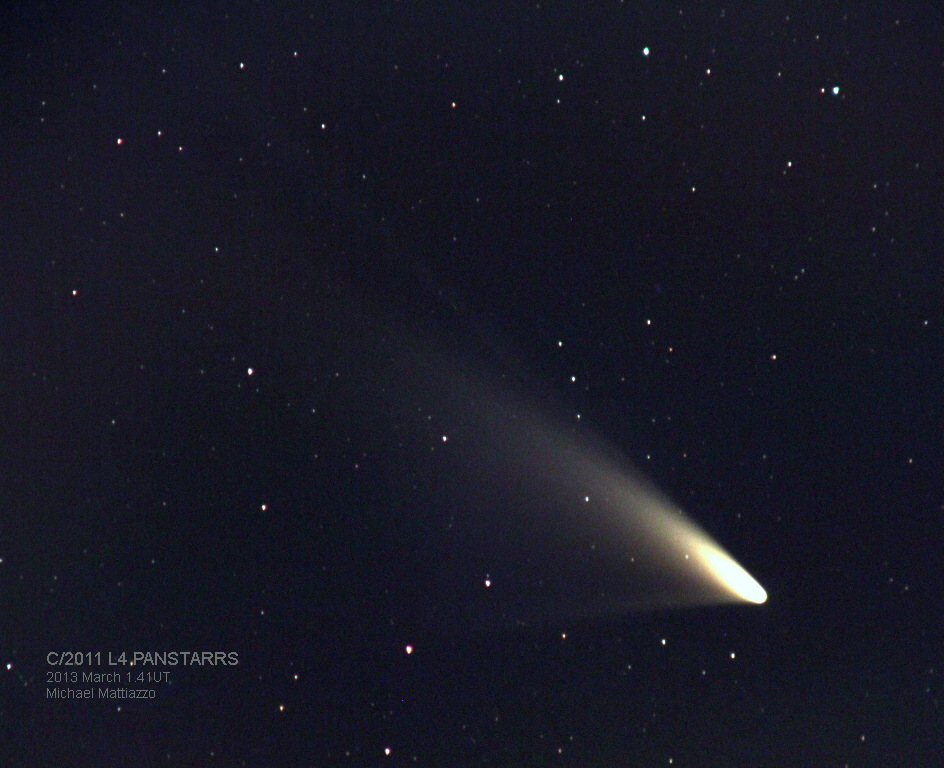
Seems like we should get a chance to see PanSTARRS in the northern hemisphere from March 8th through to March 20th. People in the southern hemisphere have already got some great pictures of the comet so it’s all getting quite exciting. The idea will be to look west just after sunset each night and scan the horizon. PanSTARRS should appear close to the crescent Moon on March 12th so will be easiest to spot then. Comet PanSTARRS is predicted to reach a magnitude +3 in brightness which is not quite as high as the 0 that was predicted initially but it could always surprise us if it suddenly releases more ice on its journey past the Sun than we think it will. So, theoretically we should be able to see it with the naked eye. As usual though, binoculars or a telescope will work much better. Fingers crossed for clear skies through March!
PanSTARRS is giving us a great opportunity for a warm-up act in time for Comet ISON later in the year (Nov/Dec time). ISON may be even brighter, but as usual with comets, only time will tell what we’ll actually get to see.
For a bit more info about PanSTARRS and ISON, see my earlier blog entries in February 2013.
TV appearance on Horizon!!
This week I appeared on BBC2 talking about meteorites and impacts on ‘Horizon: The Truth About Meteors’. It’s still available on iPlayer (UK only I think) and should be for a fair while if you missed it, or if you need to see it again to understand the science (they covered quite a lot!). I thought the production team did a great job and it was a fun experience being involved with the making of a programme that they put together in one week! Very impressive. Here’s a screen capture of me speaking on the show, the rest was presented by Professor Iain Stewart and they also interviewed other scientists from The Open University (Prof Monica Grady) and one of my collaborators from the Natural History Museum in London (Prof Sara Russell). Great seeing so many faces I know on TV!
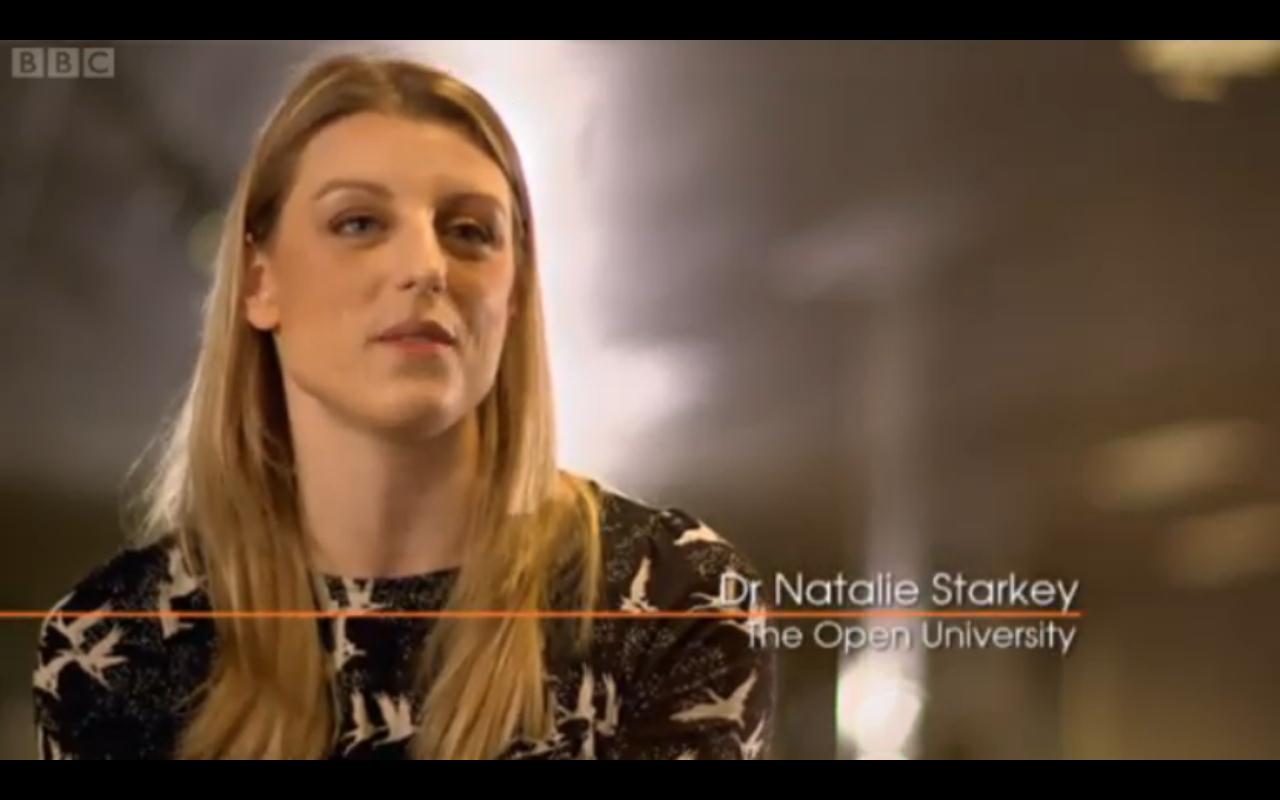
…PanSTARRS update to come soon, but look out for the comet at the end of this week, I’ve been too busy to write more about it but endeavour to do so soon…
Crazy cosmic coincidence
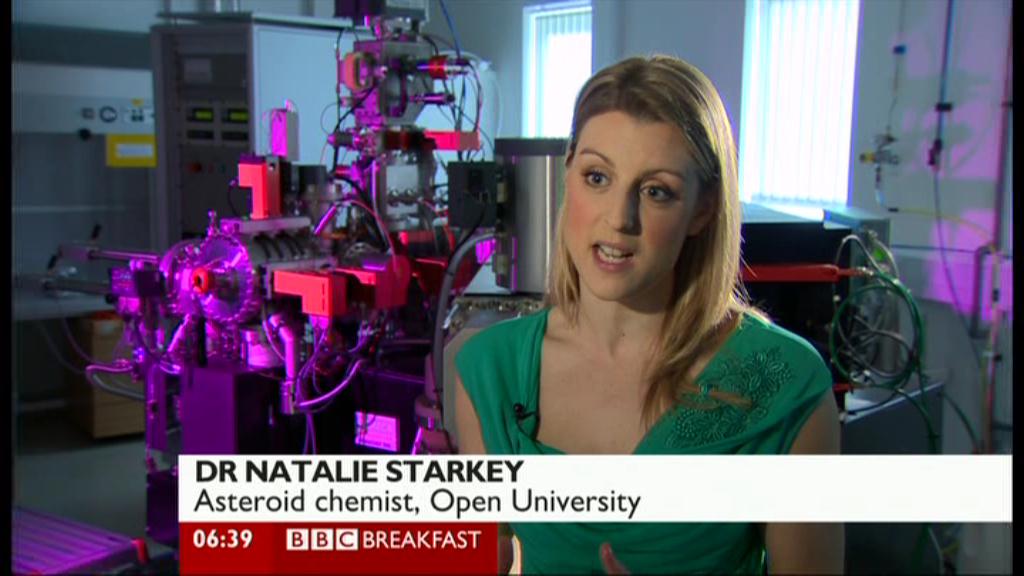
Well it’s been quite a week for space science. As reported in my blog last week we were awaiting on Earth for the very close flyby of asteroid 2012DA14. I was filmed for BBC News here in the UK about this (see below for links). However, on the very same day this flyby was due to occur, another asteroid caused havoc in Russia, and it was totally unrelated to 2012DA14. The Russian meteorite that resulted from this particular asteroid hitting the Earth is now unofficially named the Chebarkul meteorite and so far there are reports that over 50 fragments of the exploded asteroid have been collected, although there may be more to come from the bottom of an ice-covered lake. The asteroid actually exploded into small pieces as it was heated during atmospheric entry, it may have been travelling at speeds of around 20km/s and reports show it created a sonic boom during the explosion that actually caused lots of damage in Russia and a fair few people were injured. Now that pieces of the rock have been collected we will hopefully obtain one or two of these fragments for analysis at the Open University where we can look at it in detail under a microscope and measure its oxygen isotopes to learn more about where and how it formed. In the meantime, reports suggest it’s an ‘ordinary chondrite’ which is a common type of meteorite originating from an asteroid type that we have many samples from on Earth. However, every new meteorite has the potential to tell us something new about the formation of the Solar System and it may turn out that this is a new type of asteroid never sampled before. We’ll learn more over the coming months as scientists study it in more detail.
Piece in The Guardian Newspaper: http://www.guardian.co.uk/science/shortcuts/2013/feb/18/russian-meteorite-fragments-stratospheric-prices
BBC breakfast piece: http://www.bbc.co.uk/news/science-environment-21469066
BBC Newround piece: http://www.bbc.co.uk/newsround/21469653
Asteroid 2012 DA14 flight path animation
I found this cool little video animation for the flight path expected for the 2012 DA14 asteroid that is due to fly-past Friday 15th February in the evening (UK-time). Looks like we won’t get to see much in the UK with the naked eye as it won’t be very bright, although with a good pair of binoculars or a telescope you might be lucky.
Cafe Scientifique, Reading
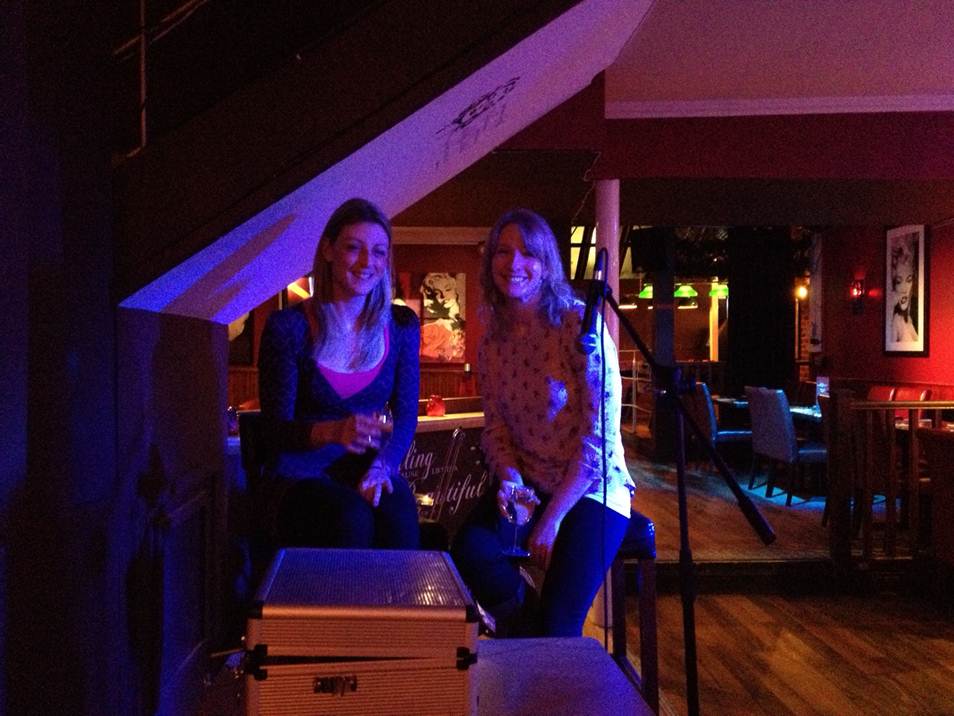
Last night I went along to Monroe’s Rock Café in Reading with Dr Louisa Preston (Open University) to talk to a Café Scientifique group about ‘Life in the Cosmos’. The event was attended by 90 people and begun with us talking for around 30 minutes about our research. Louisa started off with how we search for, and understand, life in the Solar System. She then handed over to me to talk about how life might have been delivered to Earth on asteroids and comets. We then had a short break where we were able to speak to people about the meteorite samples we took along, including a piece of the Moon, Mars and a very heavy iron meteorite called Gibeon. Everyone was very excited about the samples and it was great to see people being so interested in holding a piece of Mars! We then fielded questions from the audience, having interesting debates as far-reaching as the evolution of life on Earth to the use of oxygen isotopes in the understanding of the Solar System.
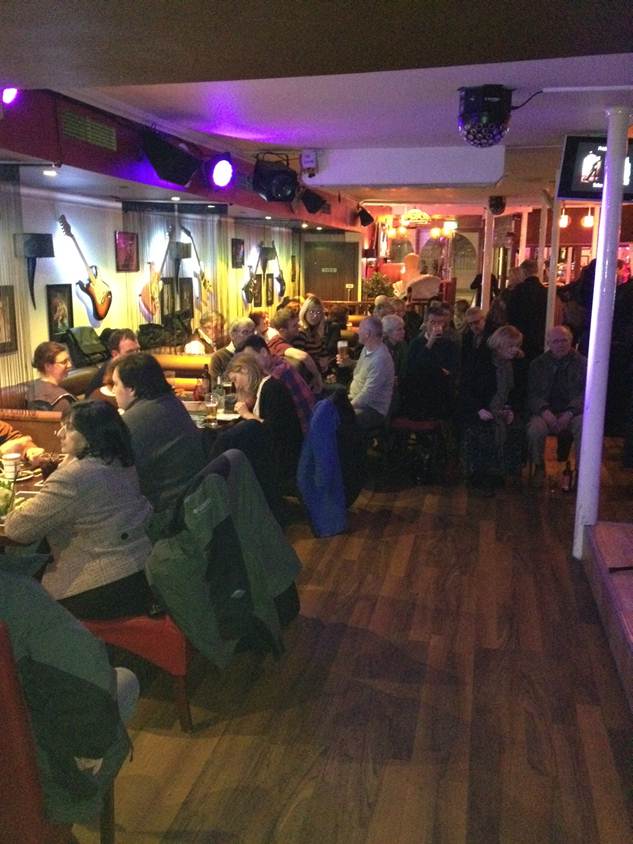
All in all it was a really fun event and I’d happily do one again. Café Scientifique aims to bring science out to the wider public by removing the academic setting and having presentations in a bar or café. We weren’t allowed a slide show so just spoke freely about our work which was actually less scary than I’d imagined. I’d highly recommend finding a Café nearby to go along to, it’s a good way to spend an evening.
Close Earth flyby of asteroid 2012 DA14
Another astronomy related post. This time about an asteroid rather than a comet. On Friday 15th February asteroid 2012 DA14 will make a very close flyby (28,000 kms) of the Earth. This is at a similar height to some high orbiting satellites and, therefore, closer than the Moon. This asteroid is not set to actually hit the Earth in 2013, and it won’t when it returns to Earth in 2020. However, if it had been on a collison course with Earth then it could have caused some damage because it’s around 50 metres wide. Although, considering that over half of the Earth is covered by water then any asteroid on a collision course with Earth would be more likely to hit water than any major city.
You should be able to see the asteroid in the night sky on February 15th but it will be quite faint because, unlike comets, it doesn’t produce a coma when flying near to the Sun. It will be low to the north-eastern horizon and moving quite quickly (around 20,000-30,000 kph)!
The asteroid is known as an NEO or a Near-Earth Asteroid and was detected by an observatory in Spain. Unfortunately it won’t be a particularly useful asteroid for my type of science because I would need a sample of it on Earth in order to analyse it in a mass spectrometer to see what elements it contained. However, in the future it may be important for humans to understand how we might be able to deflect asteroids if they happened to be on a collision course with Earth…asteroids have certainly collided with Earth in the past and so are expected to in the future…this isn’t just the stuff of movies!! Hopefully if they send up Bruce Willis to sort it out then they could get him to collect a sample for the cosmochemists…now that bit wasn’t in the movie!

